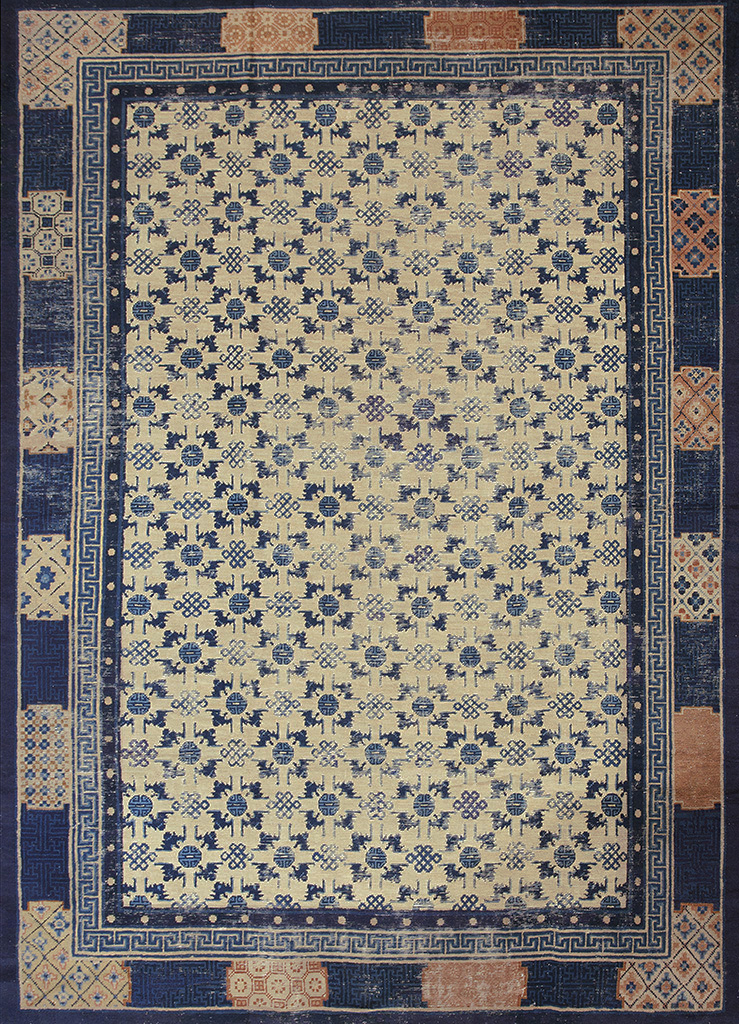
#20993
Main Hall Carpet
Probably Suiyuan, North China
Early Nineteenth Century
8’5” x 11’10”
Structural Analysis:
Warp: cotton, off white, natural, Z-4-S;
Weft: cotton, off white, natural, Z-6-S, Z-7-S, loosely plied,2 shoots alternating, equally slack-wavy;
Pile: wool, Z-2, thin yarn, granular surface texture;
Knot: Pl/0 degrees alternate warp depression/horizontal 5 per inch x 5 per vertical inch = 25 per square inch;
Sides: 2 cords each of two body warps, weft attached; closely weft covered in figure eight style;
Ends: not original;
Weft/knot ratio:50/50, a few weft wedges in outer border along edges.
Remarks:
The oatmeal field has an overall pattern of bats, knots and shou discs and is clearly adapted from a silk brocade textile pattern. The textile patterning continues in the main border where a swastika fret on a terracotta ground displays cartouches with a non-repeating series of silk brocade sections. There is a T-fret inner border with neatly turned corners and a pearled innermost stripe.
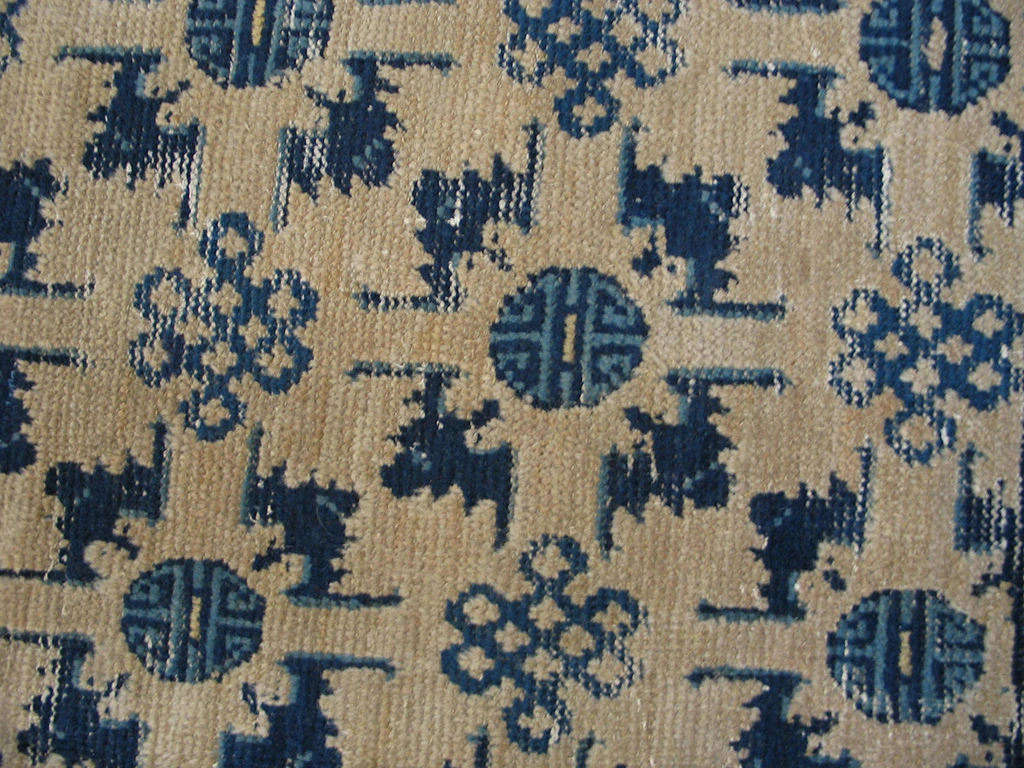
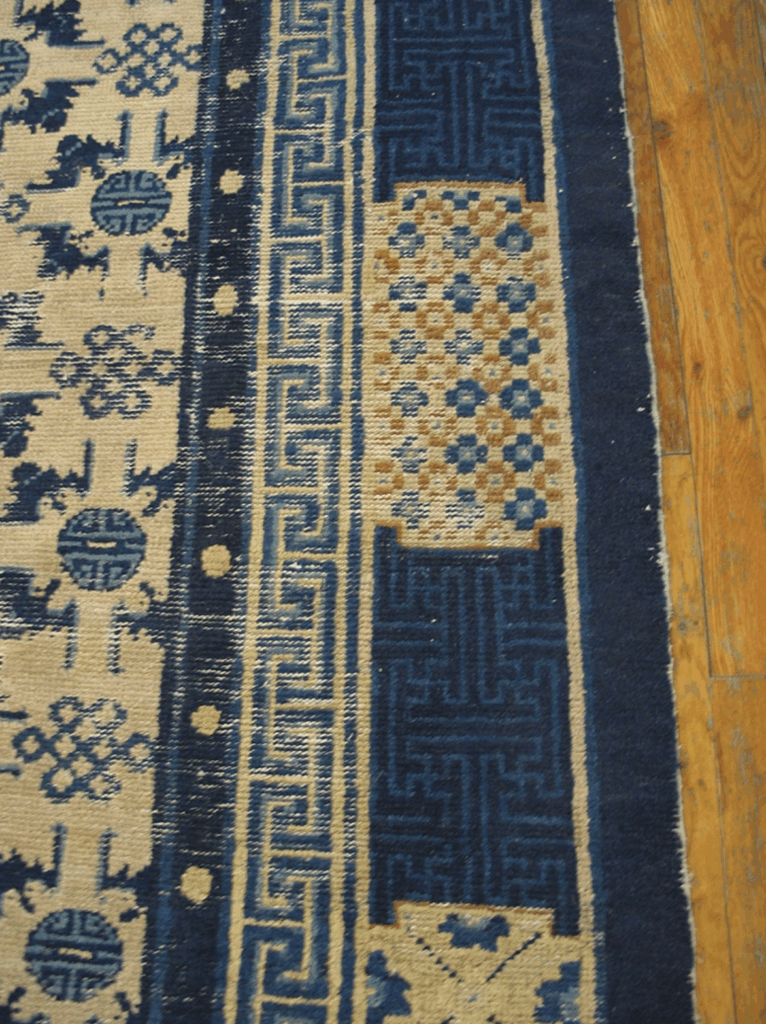
There are a few comparanda to 20993 to be noticed. One appeared in the Yamanaka Sale, American Art Association, NY, 7-8.1. l909, lot 142, 4.11 x 8.8 with an old ivory field one way patterned with bats and peaches. The inner border was also pearled while the main displayed cartouches with Taoist symbolic objects alternating with reserved enclosing knots (bought by Topalyan for $370) interestingly, #20993 is also ex-Yamanaka, sold at his sale, AAA,4-7. l2. 1929, lot 769 (for $275). The size given there is 8.1 x 11.9, probably a slight mis-measurement of the width as the picture is identical with 20933.
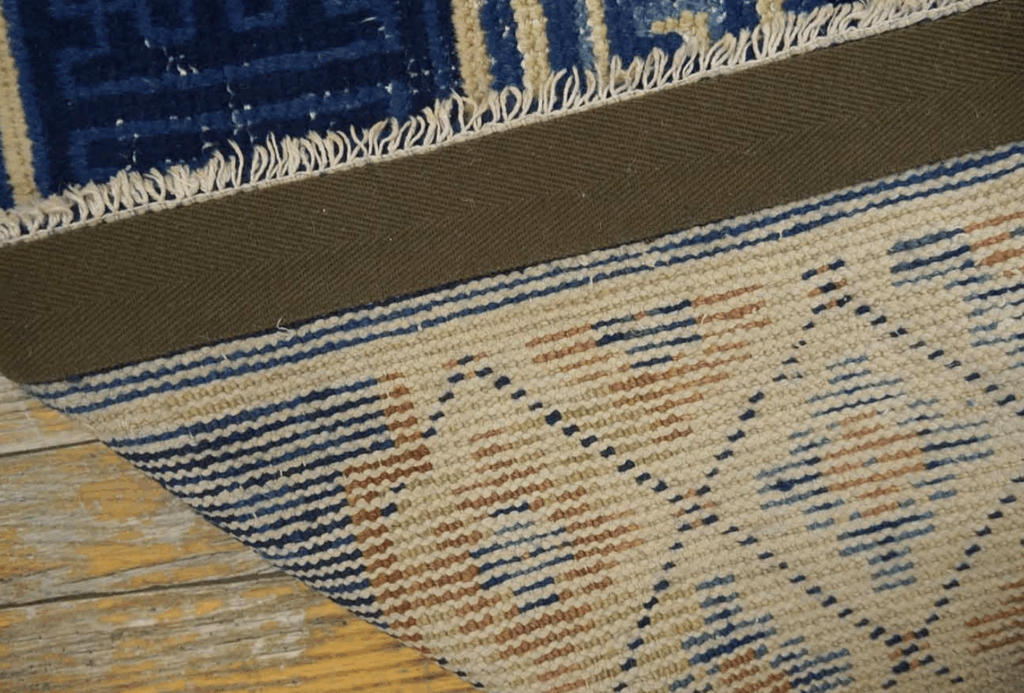
There are several cogent reasons to doubt a Ningxia origin. The Z-6,7-S wefts with relatively fine individual strands differ from the more usual Ningxia Z-4 (or occasionally Z-2 or 3) yarns with thick and irregular component strands. The selvage, though Ningxia in general setup, is far more completely covered than the usual sparse, quick Ningxia edges. The pile wool has a particularly granular and almost coarse texture with thicker individual fibers. The pile of Ningxia carpets is generally silkier and softer. The knots are more discrete. The general surface impression is visually and tactually distinct from the overwhelming run of Ningxia pieces. The field tone is not Ningxia off white, but a shade closer to pale tan, it was never yellow. The 1929 catalogue also calls it “tan”. The madder derived terracotta in the border is not usually found in Ningxia pieces. In general, then the facture significantly diverges from that expected in Ningxia rugs.
It has been asserted [fn. Hongqui] that students/workers from Matuo Akhun’s shop in Ningxia migrated to, among other places, Suiyuan in the early 18th century to establish their own carpet ateliers. They would have taken learned shop practices with them, modifying them to fit differing materials and clienteles. The hand never lies: the actual production methods would be carried over while the more superficial pattern aspects might vary more.
The verso on a quick look appears Ningxia, but a closer perusal reveals variations that sow doubts in the mind of the observer. Suiyuan might be a viable attribution. Although Suiyuan is best known for “grains of rice” patterned pieces in 4’ by 6’ or 5’ by 8’ sizes, there is no reason that a commissioned special order piece could not have been larger. A close comparison to other rugs usually assigned to Suiyuan would be useful here.
The carpet was acquired by the present owners and had sustained severe moth damage in the borders. It has been sympathetically restored and now can be definitively compared with the 1929 catalogue illustration, whereby the identity of the two pieces is established. Provenance: ex-collection Yamamnaka; sold at his sale, AAA Galleries, NY, 4-7.l2. l929, lot 769, for $275.
To view this rug on our website click here.
*written by Dr Peter Saunders.
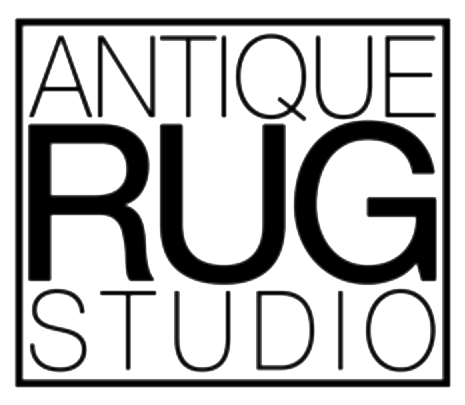
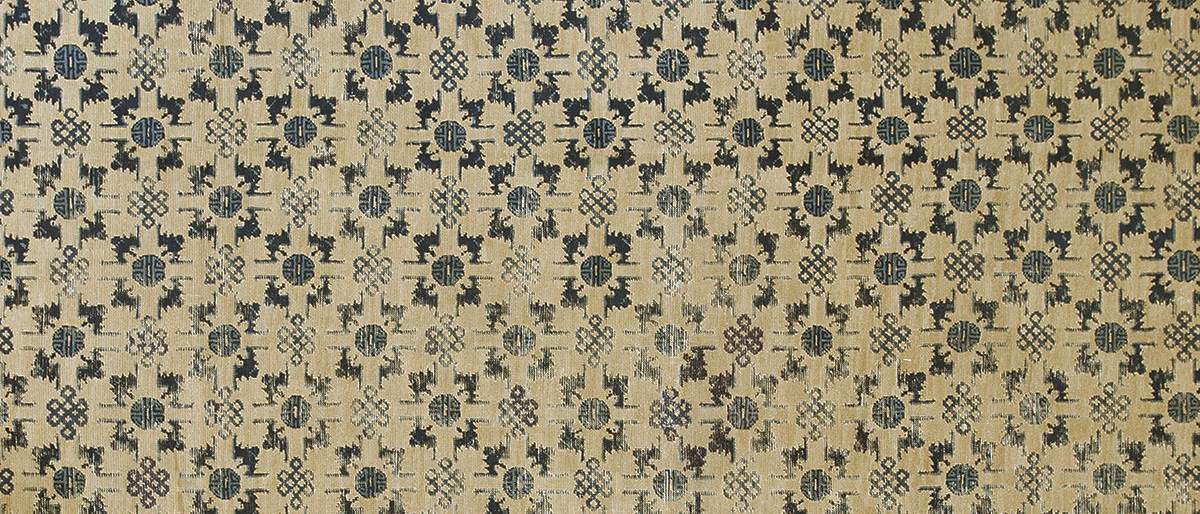
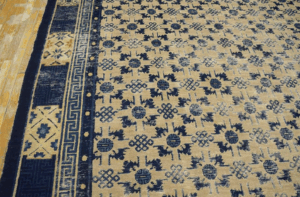
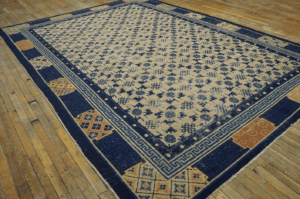
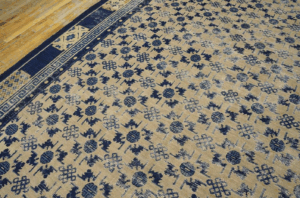
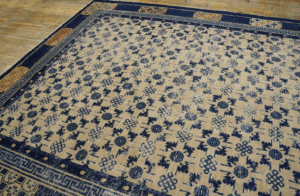
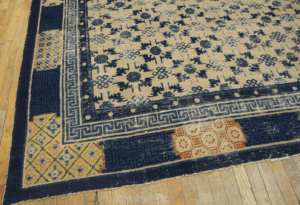


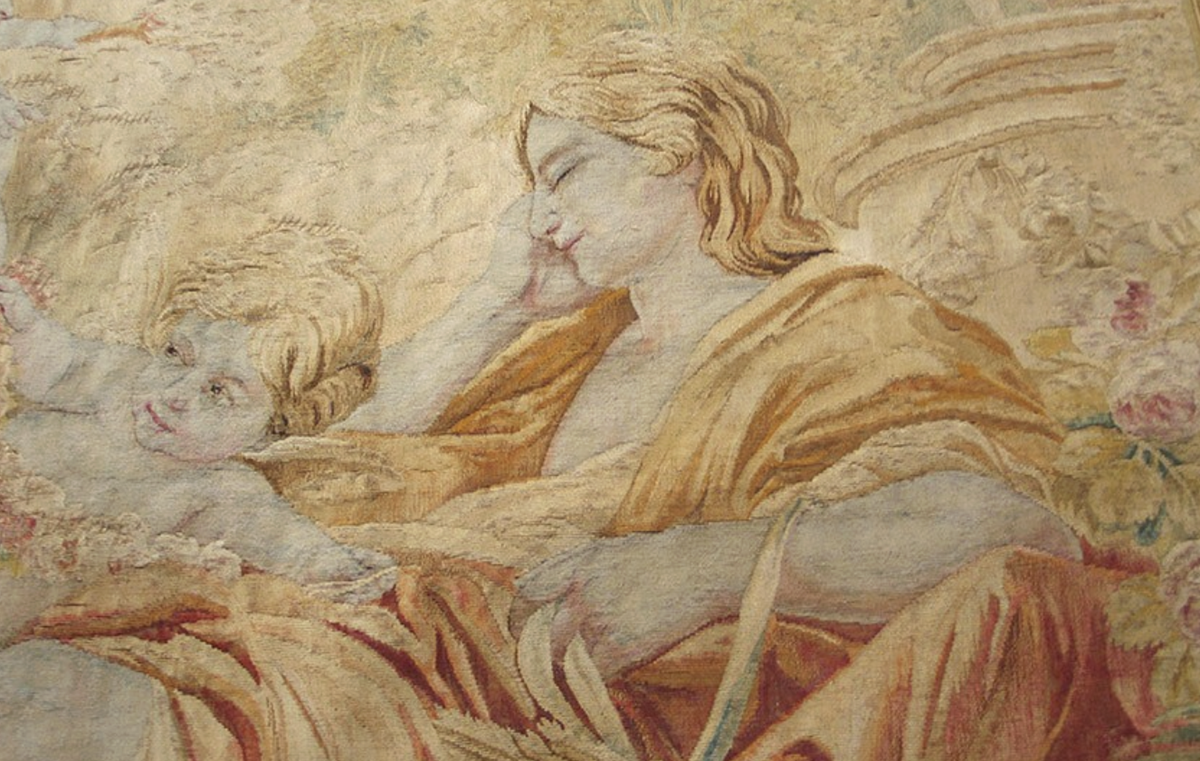

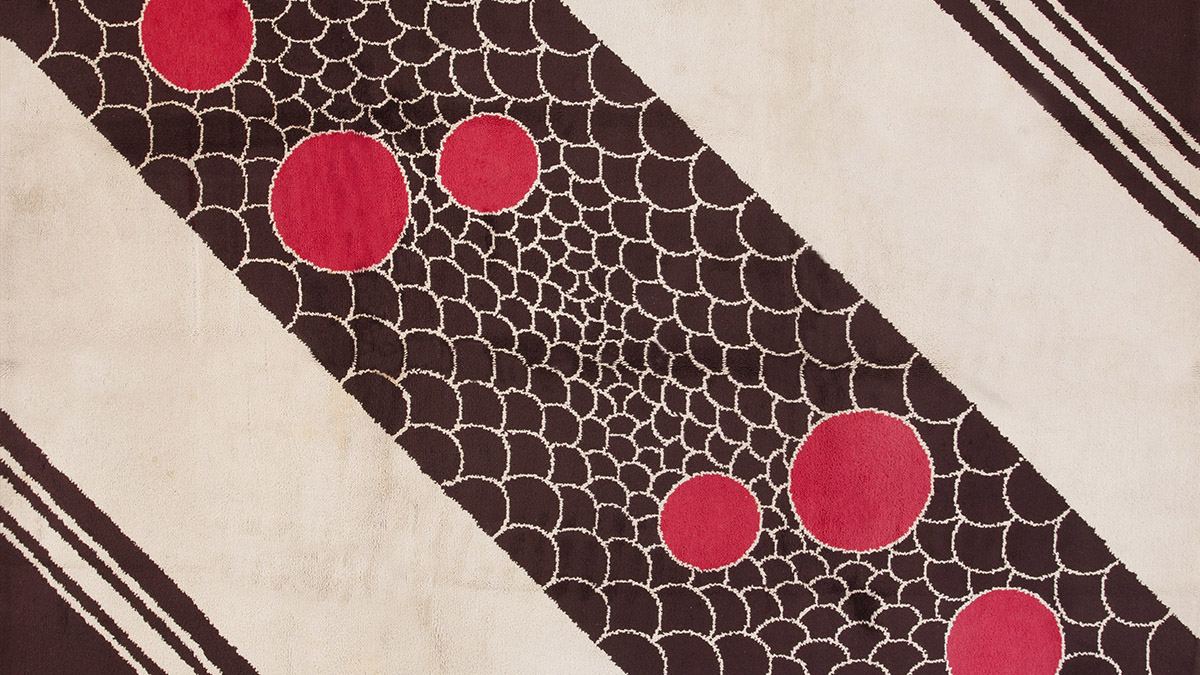
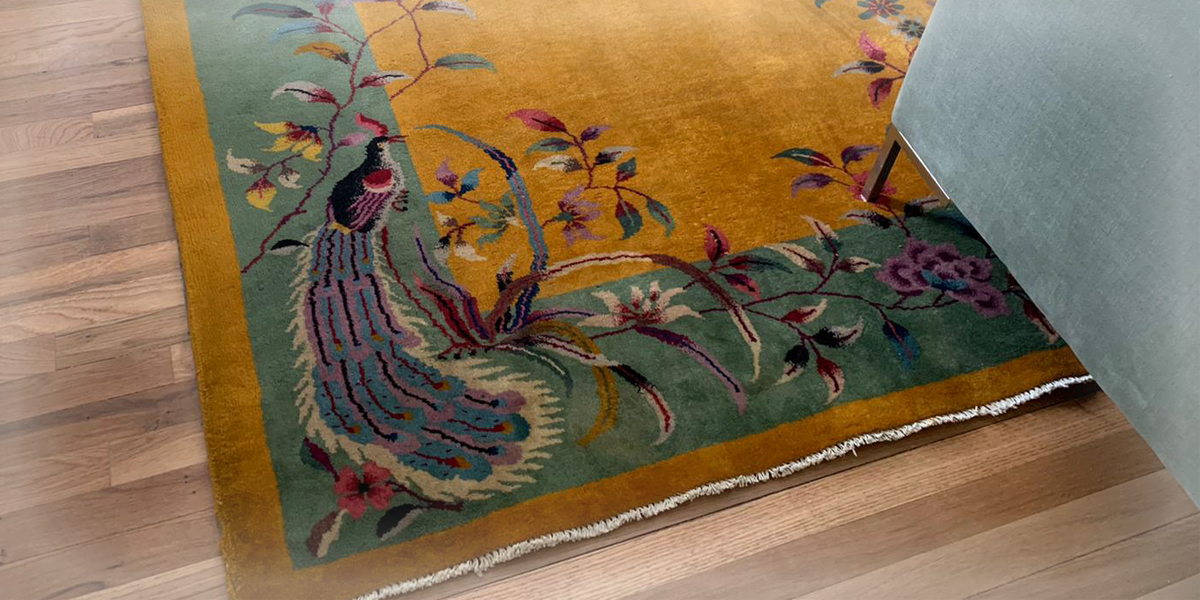
Leave a Reply